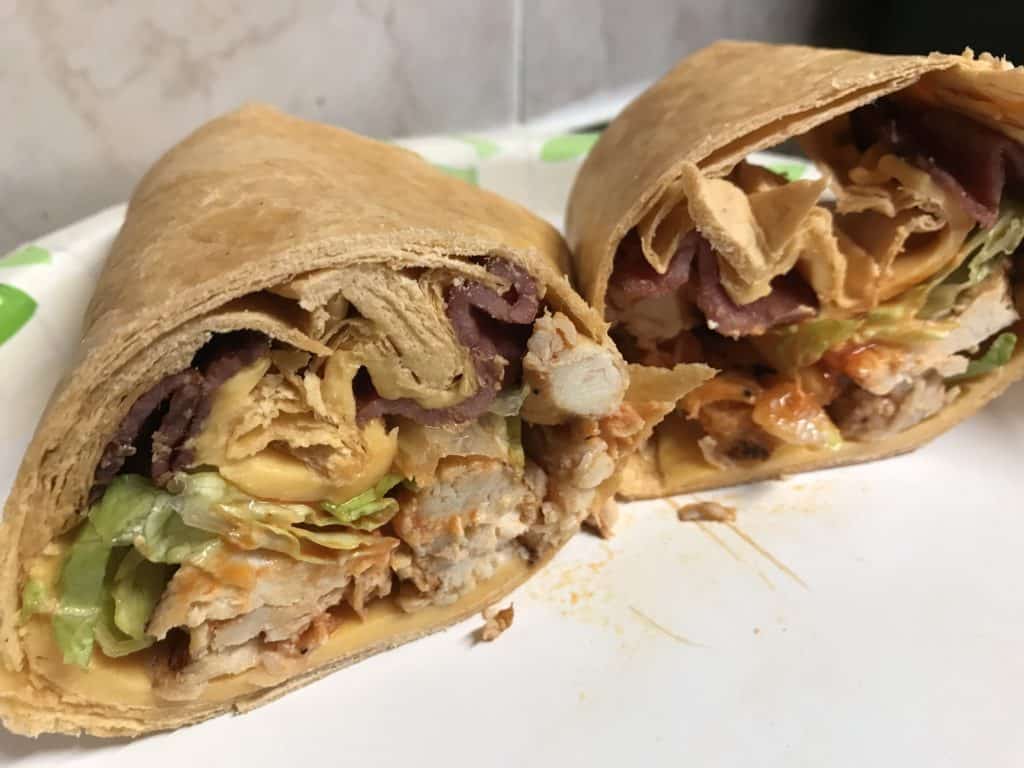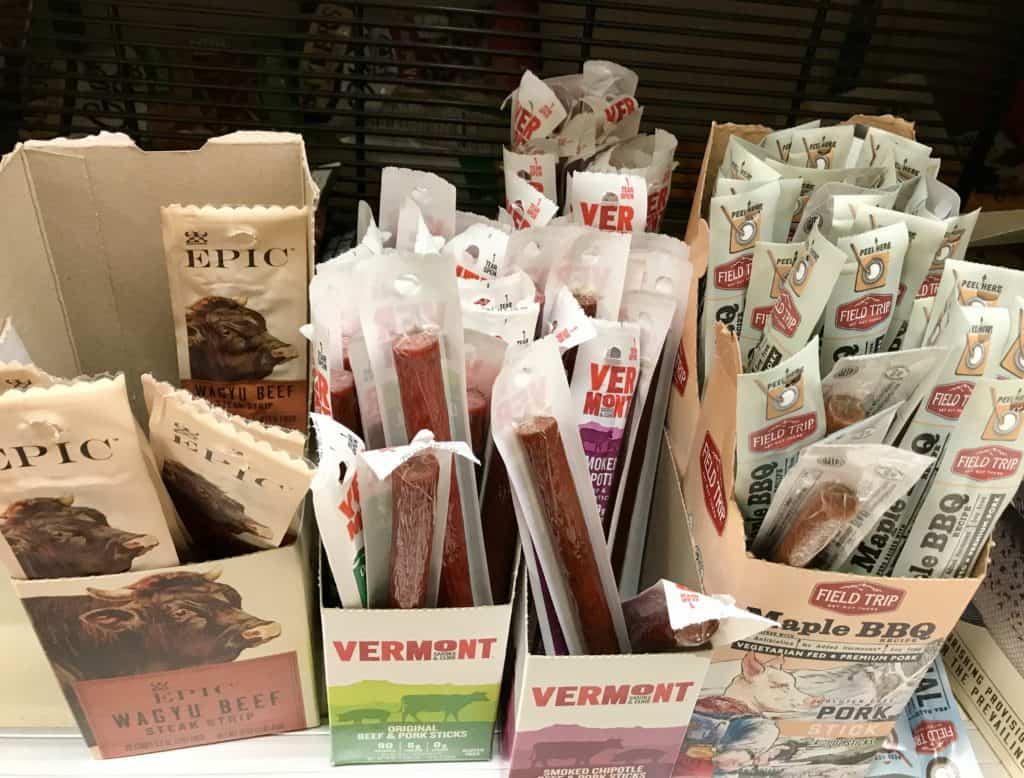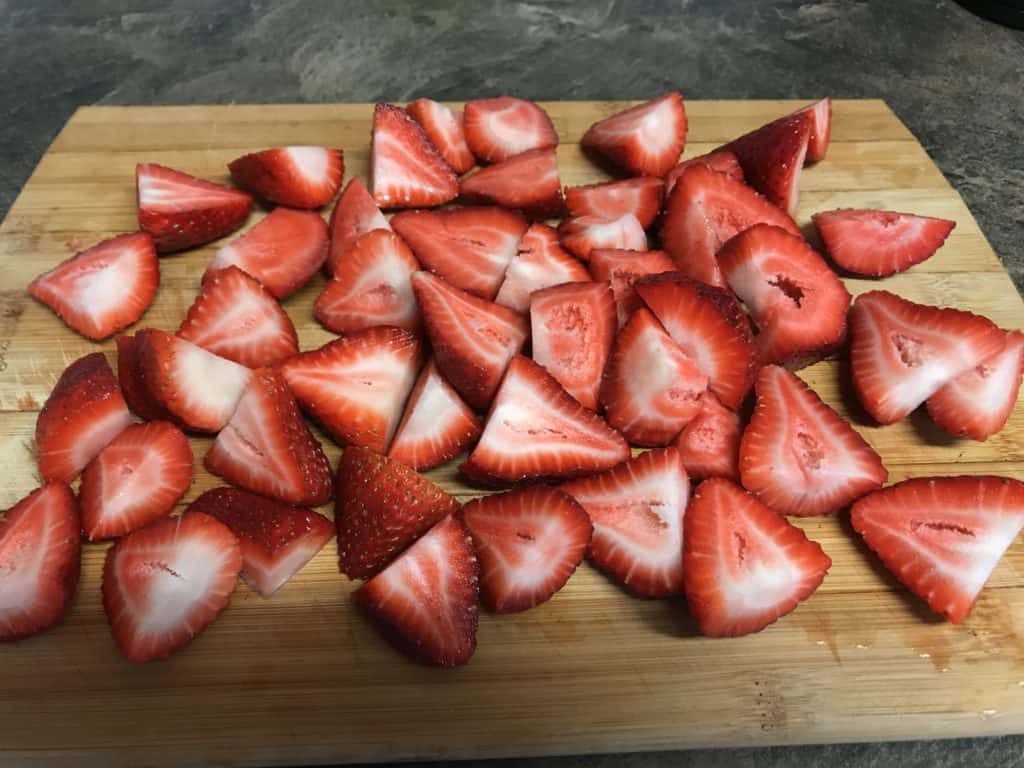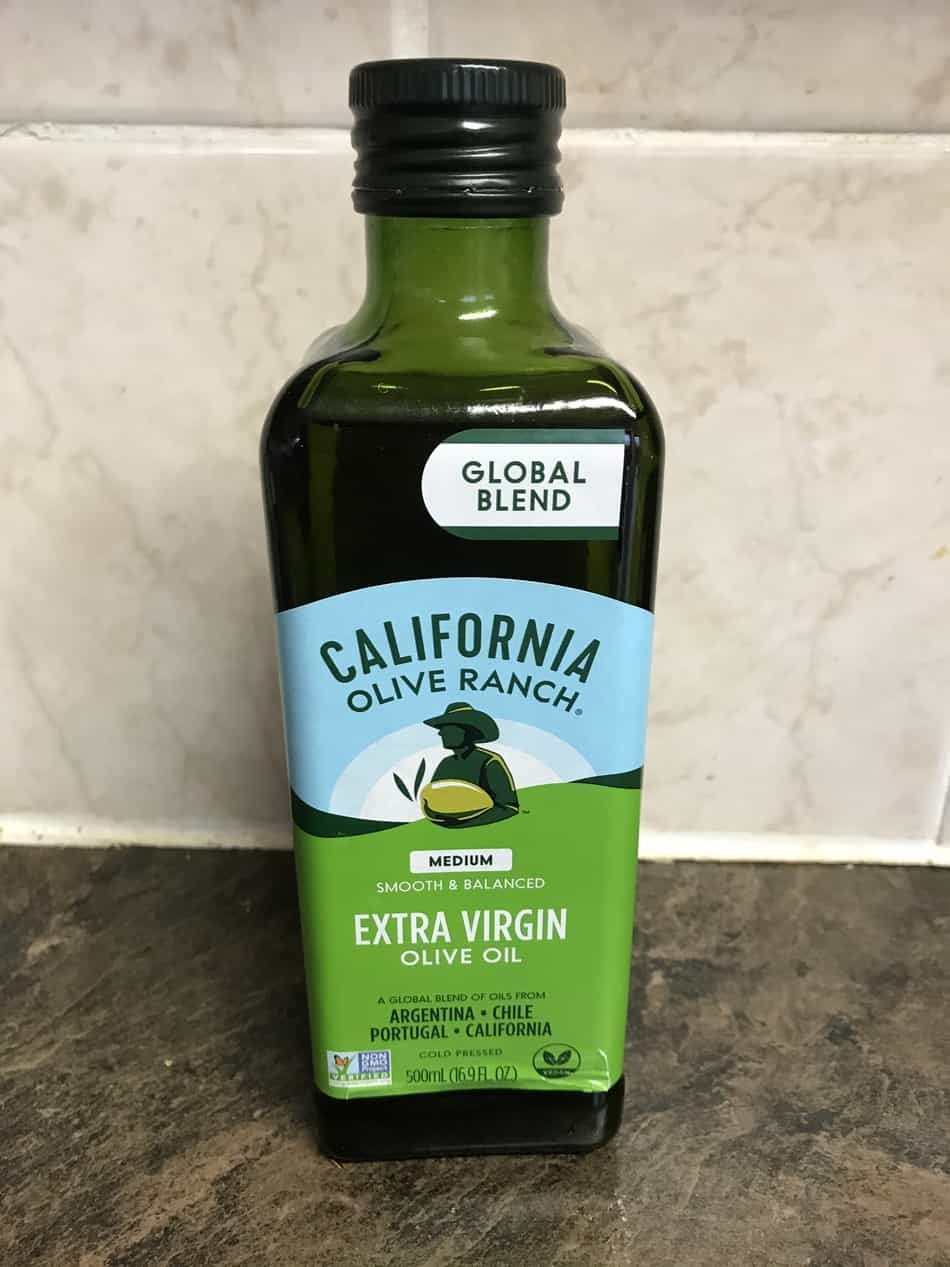
Many people have jobs where a microwave is simply not an option. It may be a blue collar job like construction work where the job site is always at a different location, or a job that requires a great deal of travel. Believe it or not, it’s not unusual for some hotels to have a refrigerator but no microwave.
While it’s easy to stray from your diet and get some takeout once in awhile, it’s not a habit you want to get into. Anyone with physique or fitness based goals knows that long term discipline with diet is important for progress.
If you want to maintain a lean, muscular physique, preparation is important. But people in this situation may feel hopeless when their options are seemingly limited as their friends bring fancy prepped meals into an office that has a microwave.
While this may be a slight disadvantage, there are still plenty of cold meal prep options that align with health and fitness related goals. You don’t have to sacrifice quality just because you don’t have the resources to reheat meals.
Below are a variety of healthy foods that can be prepped and eaten cold. They are listed under the macronutrient category that they fall into, whether it is a source of protein, carbohydrates, or fat. After that are common meal choices using these foods. Most would agree that these are reasonable recommendations; we’re not asking you to chug raw eggs like Rocky.
These meals not only don’t require reheating, they also don’t require refrigeration. At most you would need a quality lunchbox and an ice pack.
A balanced meal would contain one food choice from each macronutrient source (i.e. one protein, one carb, and one fat). Using the options below there are literally thousands of different combinations you could put together when coming up with cold meal prep ideas. The meals work for both men and women.
Cold Meal Prep Protein Sources
Protein is the focal point of any diet, as it is the only nutrient that can build and repair muscle. It is critical to get adequate protein each day, ideally from different sources. Protein breaks down into individual amino acids, and different protein sources have different amounts of these amino acids. This is why diversity in food choices is key.
Protein also supports immune health and ligament and tendon structure. It also supports bone, skin, and hair health, so it’s not just limited to muscle growth. Protein digests slowly, which helps keep you full over time.
Chicken
Chicken is a staple in the diet of anyone who frequents the gym. It’s lean, tastes decent, and is generally inexpensive. It’s also one of the few sources of meat that holds up in cold temperatures.
You would never eat a cold hamburger, but cold chicken works in salads, sandwiches, and wraps. The leaner options would be chicken breast and chicken tenderloins, while fattier options would be legs, thighs, or breaded varieties. If you want the best of both you can slice up a rotisserie chicken, which has lean white meat and fatty dark meat.
Turkey
Another member of the poultry family, turkey works both hot and cold as well. It’s harder to find turkey breast or tenderloins in a supermarket, and it’s typically more expensive.
When talking about cold cuts, turkey is one of the few worth your while. It’s high in protein and is even offered in low sodium varieties. Obviously it works on a sandwich but is good as a snack on its own as well.
Tuna
Tuna fish fell out of favor due to public worry over mercury content. Prior to that it was a major part of bodybuilder meal plans, especially beginners who couldn’t afford higher quality food. Watch any video of a successful bodybuilder talking about their humble beginnings in the sport and they likely were eating tuna for protein because it was so cheap.
If you’re looking for a low mercury tuna, opt for skipjack tuna. It’s a little more expensive, about $3-4 per can, but it tastes great. You could legitimately eat it right out of the can with enjoyment, unlike chunk or albacore which is a major struggle.
Skipjack tuna is naturally very lean, but also comes packed in extra virgin olive oil for anyone that wants additional fat in their meal. Wild Planet and Safe Catch are two top brands for skipjack tuna.
Protein Bars
Food technology has progressed massively since the early days of dietary supplements. Protein bars used to be flavorless, dense, and hard to get down. Now they taste like candy.
Some bars, like MetRx Big 100 bars, act as meal replacements. They’re larger than normal protein bars and yield about 400 calories per bar. Others, like Quest, have leaner macros and contain more fiber.
Nowadays there are tons of different brands and honestly there’s really not a bad one in the bunch. There are even bars low in carbohydrates, like Power Crunch. Whatever diet or macros you follow, there’s a good chance you can find a protein bar to fit.
Protein Shakes (RTD)
Ready-to-drink (RTD) protein shakes are pre made and require no mixing. Most do not need to be refrigerated, aside from ones containing actual milk. With that said, a temperature controlled lunch bag with an ice pack should be enough to keep it cool.
RTD shakes will be more expensive than protein powder on a per serving basis, but sometimes it’s worth it for the convenience. Like protein bars, these have come a long way in the taste department since the early supplement days. Despite this, the macros still remain relatively lean. It’s not hard to find a low fat, low carb RTD.
Protein Powder
Protein powders are the better option for anyone who wants more autonomy over meal structure. While protein bars and shakes are relatively lean, you can find protein powders that have absolutely zero carbs and fat. This allows an individual to mix and match other foods with the protein powder, or add more protein to the diet without the accompanying carbs and fats.
While it may not be as convenient as an RTD, it’s still pretty easy to prepare. You can simply throw a scoop or two into an empty shaker bottle and find some water later on. Protein powders, especially isolate and hydrolyzed protein, mix very easily in a shaker. Gone are the days of chalky powders that require a blender.
Sardines
Hey it’s not my cup of tea, but sardines are one of the most nutrient dense protein sources you’ll ever find. They are a great source of vitamin B12, and one of the few quality non-dairy sources of calcium. Like tuna, you can find sardines packed in water or olive oil.

Jerky
Jerky is a great snack that requires no prep work. It isn’t the most cost efficient source of protein, but it tastes good and comes in a ton of varieties. Jerky and meat sticks can be made from beef, turkey, ostrich, elk, among other animals. Beyond that they can be seasoned to taste sweet or spicy.
Hard Boiled Eggs
Most whole foods fall into one macronutrient category. For example chicken is predominately protein, potatoes are predominately carbs, and nuts are predominately fat. Eggs, however, are a quality source of both protein and fat. They are a nutrient powerhouse and one of the most bioavailable forms of protein.
If you’re on the go, hard boiled eggs are your only option as it’s unlikely you’ll want to eat cold scrambled eggs. Hard boiled eggs taste pretty good on their own, but are a great addition to salads as well. You can also add salt and pepper to spice it up.
Cold Meal Prep Carbohydrate Sources
Carbohydrates are the primary fuel source for most physical activity. They can be stored as an energy reserve in muscle and the liver. Fiber, which is technically a carbohydrate, aids in digestion and supports gut health.
Wraps
Wraps are the glue that will hold most ingredients on this list together. They taste great and pack away very easily. If you want additional fiber, opt for a whole wheat wrap or a high fiber wrap made by a company like Fiber One.
Bagels, rolls, and bread can also fit into this category. What you choose depends on your preference and macros. Bagels are the most calorie dense of the bunch while whole grain bread is the least.

Fruit
This is almost a category in of itself, but it would be redundant to list every fruit known to man. Fresh fruit in general is a great source of vitamins, minerals, antioxidants, fiber, and water. Most people don’t consider water content when it comes to food, but fruits and vegetables do play a role in maintaining hydration.
The sugar content of fruit often scares people away, but when you compare it to other foods on a per serving basis, it isn’t that high. Berries, melon, peaches, and grapefruit are all low in sugar. Even a fruit that is considered to be high in sugar like an apple only has about 15-20 grams.
Fresh fruit that is in season is a great midday snack for anyone performing hard labor outdoors. It’s easily digestible and a quick source of energy.
Pasta
This is not to suggest anyone eat cold spaghetti and meatballs, this refers to pasta like macaroni salad. Pasta is an easily digestible carbohydrate, as it breaks down quickly into pure glucose. Cold pasta goes well with certain meats, hard boiled eggs, diced peppers, and olives. It’s very easy to make an entire box and divide it up across the week.
Raw Vegetables
Certain vegetables are more palatable raw than others, like carrots, bell peppers, cucumbers, and celery. Similar to fruits, vegetables are a great source of micronutrients, fiber, and water. A good rule when choosing fruits and vegetables is to consume a variety of colors, as color is often an indicator of the different nutrients a specific food provides. Vegetables are very low in calories, and easy to fit into any diet plan.
Leafy Greens
This could obviously fit into the same category as raw vegetables, but leafy greens like lettuce, spinach, or kale will be the base of any salad you make. Salads are easy to prepare in bunches and the toppings are limitless.
While salads are an obvious diet food, with some creativity they could work for someone looking to pack on size. Putting nuts, healthy oils, or breaded chicken on a salad can easily add about 500 calories.
Rice Cakes
Rice cakes come in so many flavors and varieties that they’re honestly comparable to chips. It’s basically puffed rice so it’s all carbs but some people like to spread peanut butter on top. They’re the most shelf stable carb on the list so far along with pasta so you won’t have to worry about them going bad.
Trail Mix
Trail mix could fall in either the carb or fat category. It’s typically made up of mixed nuts and dried fruits, and therefore would also have long shelf life just like rice cakes. The base of trail mix is usually peanuts, which is fine, but if you’re willing to pay up you can get something of higher quality.
Oats
Raw oats may sound strange, but they actually taste good when mixed with protein powder and water. The oats soften up and have an interesting texture. Oats are a slow digesting carb and great source of soluble and insoluble fiber.
Overnight oats are also a popular recipe. Depending on the ingredients you can take it with you on the road and maintain freshness with an ice pack. To be safe, you may want to avoid dairy like milk or greek yogurt and opt for almond milk instead.
Cold Meal Prep Fat Sources
Like carbohydrates, fats also serve as an energy source. During exercise they act as an energy reserve when carbohydrates become limited. In addition they support hormonal health, and help with the absorption of fat soluble vitamins A, D, E and K.
Fats are more dense than any other macronutrient, containing 9 calories per gram. They digest slower than the other macronutrients, which helps keep you satiated for longer periods of time.
Peanut Butter
Who doesn’t love peanut butter? Well I suppose people who are allergic. Peanut butter is one of the best tasting fat sources. It comes in natural varieties that do not contain trans fat, which are honestly not much more expensive than regular. They also come in individual packets, which are not only convenient but can help prevent overeating.
Peanut butter works great in a protein shake, with fruit, or on rice cakes.
Almond Butter
Almond butter will cost a bit more than peanut butter, but similarly tastes great and is offered in individual packets. Almond butter contains more fiber per serving. People with peanut allergies may opt for almond butter instead of peanut butter. Some people simply prefer the taste.
Nuts
Similar to the fruits mentioned earlier, nuts could be their own category within these cold meal prep ideas. There are over a dozen different nuts, all offering different nutrition profiles. This is particularly true when comparing the ratio of saturated, monounsaturated, and polyunsaturated fat content among them.
These different types of fat all offer different benefits and drawbacks. Even saturated fat, which often has a negative connotation when it comes to health, is very stable by nature. This makes it good to cook with because it stands up to heat. Polyunsaturated fats like omega 3’s, which have a positive connotation with health, are unstable at high temperatures. This makes it a poor choice to cook with as it could go rancid and lead to oxidation.
As a result, the best outlook when choosing nuts is simply to have variety. For example, you could go with cashews and almonds one week and Brazil nuts the next. Not only will you get different sources of fat, you’ll have diversity with nutrients as well.
Nuts are great for a quick boost of energy when you’re running low on time. They work as a side dish for a meal lacking fats and as a topping for salads.

Olive Oil
Olive oil is a great source of monounsaturated fats. It is a staple of the Mediterranean diet, which is correlated with optimal health and longevity. It goes well with virtually any meat or vegetable. There are obviously a ton of different brands, but personally I think California Olive Ranch tastes best.
Avocado
Avocado is a versatile food that can go with any dish. Like olive oil, it is a great source of monounsaturated fats. It also contains a good amount of fiber and is one of the best sources of potassium.
Cold Meal Prep Examples
- Turkey Wrap with Mixed Berries
- Romaine Salad with Tuna, Hard Boiled Eggs, and Cashews
- Spinach Salad with Grilled Chicken, Strawberries, and Slivered Almonds
- MetRx Bar with a Banana
- Protein Shake with Rice Cakes and Almond Butter
- Grilled Chicken with Tri Color Rotini Pasta Salad
- Tuna on a Bagel with Mixed Raw Vegetables
- Protein Shake with Oats
- Turkey Tenderloin Salad with Brazil Nuts
- Quest Bar, Jerky, and Trail Mix
- Sardines on Whole Grain Bread with Half a Grapefruit
- Grilled Chicken Salad with Avocado and Blueberries
- Hard Boiled Eggs with Hot Sauce, Bell Peppers, and Celery
- RTD Protein Shake with Trail Mix and Raw Oats
- Rotisserie Chicken and Whole Grain Roll
- Protein Shake, Apple, and Almond Butter
- Spring Mix Salad with Tuna, Cucumbers, Dried Fruit, and Olive Oil
- Turkey on a Roll with Grapes and Half an Avocado
- Overnight Oats with Almond Milk, Protein Powder, and Peanut Butter
- Grilled Chicken, Lettuce, Tomato, and Olive Oil on a Pita
Recent Posts
Stretching Before Workouts: Essential Warmup or Performance Killer
“Don’t stretch before workouts, your muscles become too supple” “Stretch before your workouts, warming up is important” It's conflicting advice like this that drives people crazy,...
Best Protein Bar For the Money | Cost Effective, High Quality
Protein bars are no longer a supplement dedicated to diehard gym rats, with awful taste and the consistency of a brick. Men, women, and even teenagers can commonly be seen eating protein bars. The...
